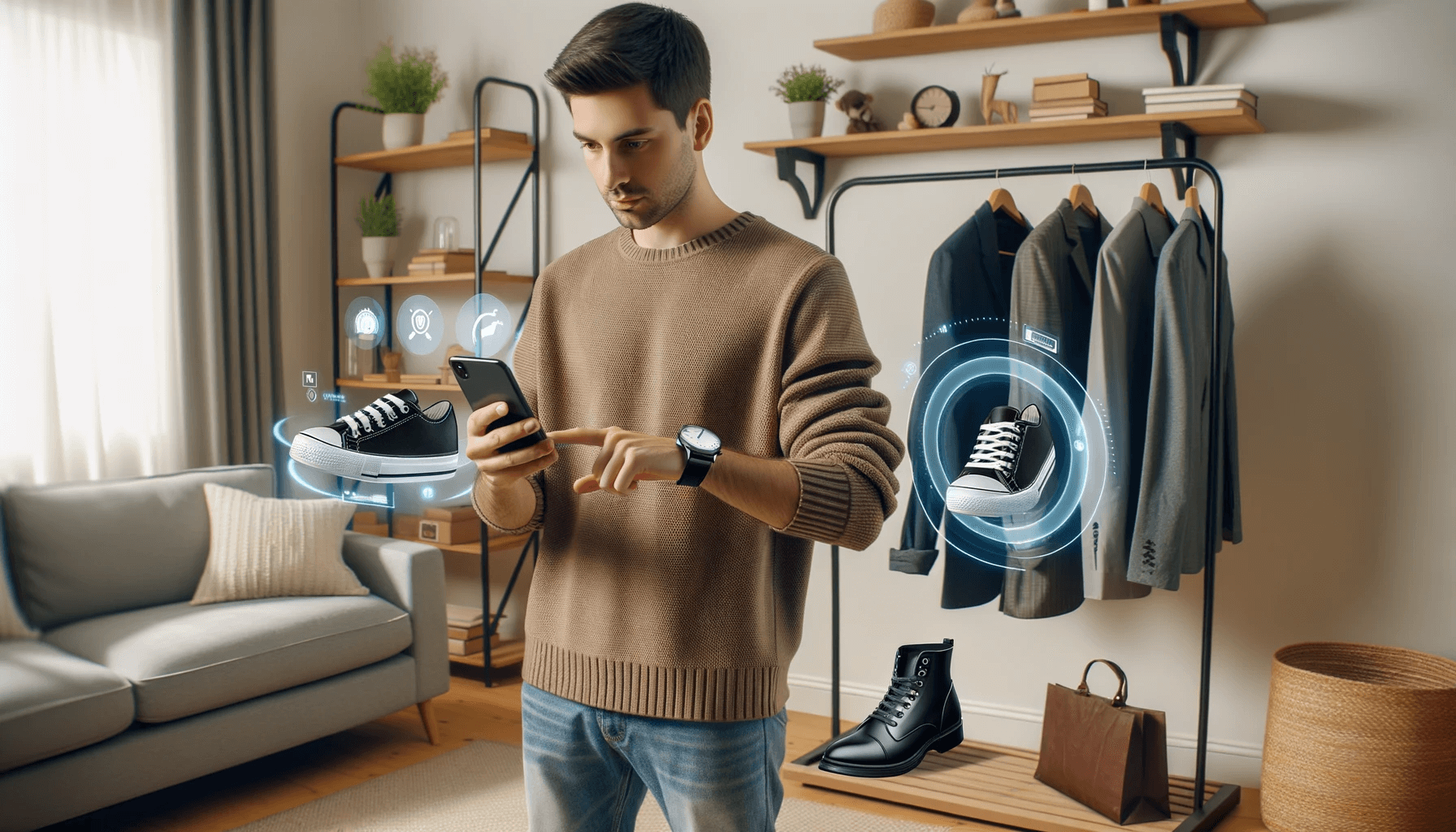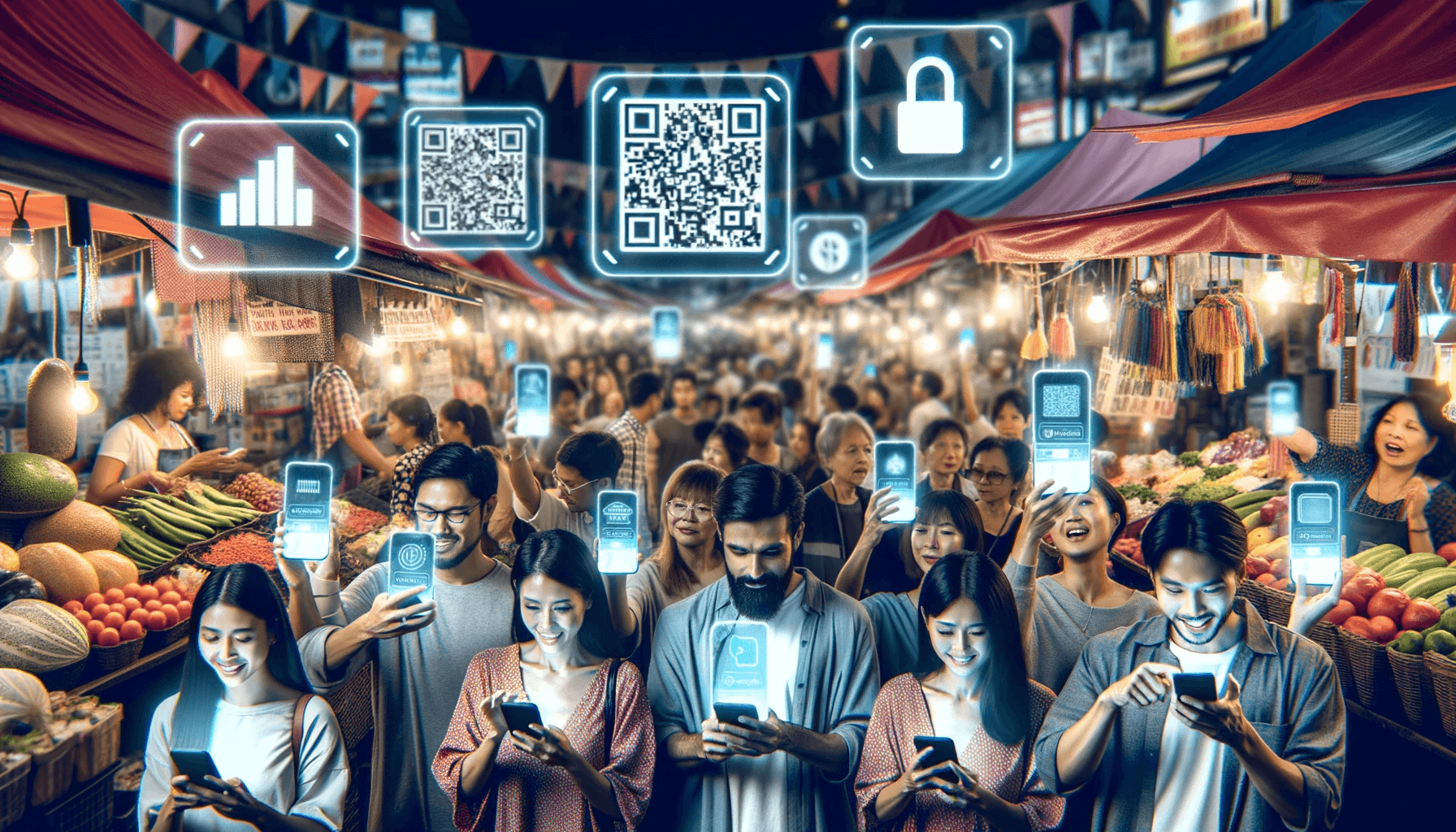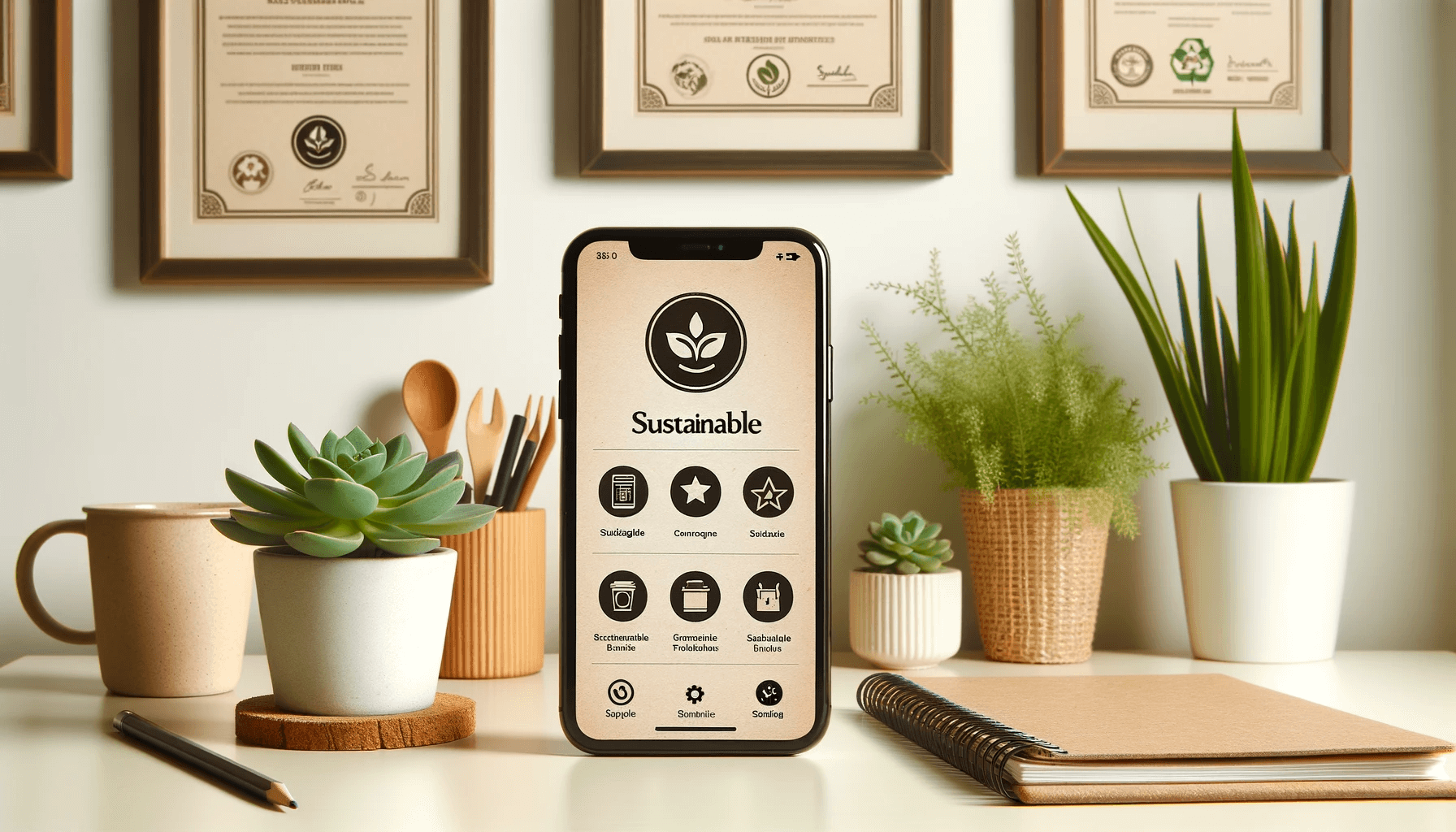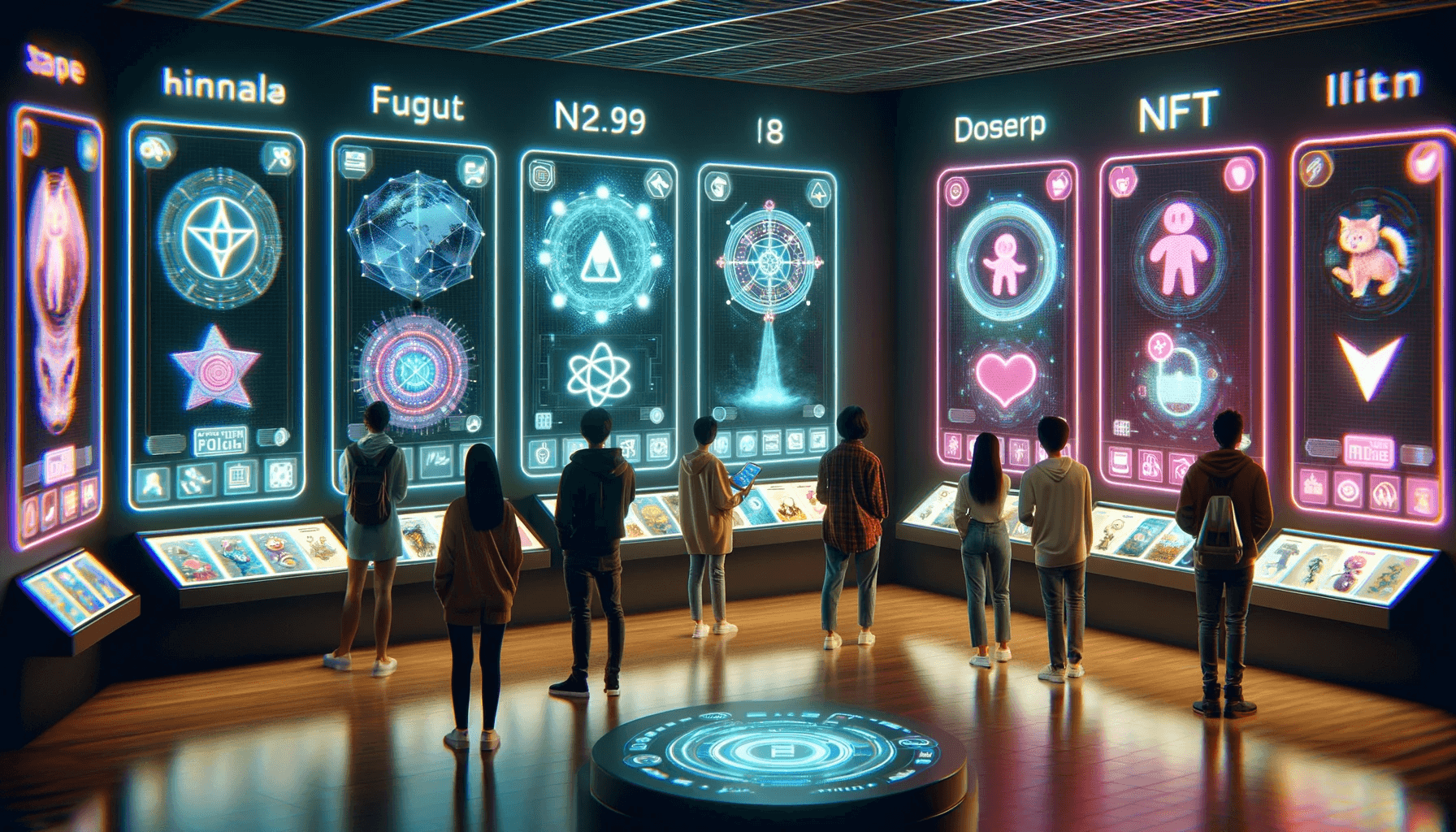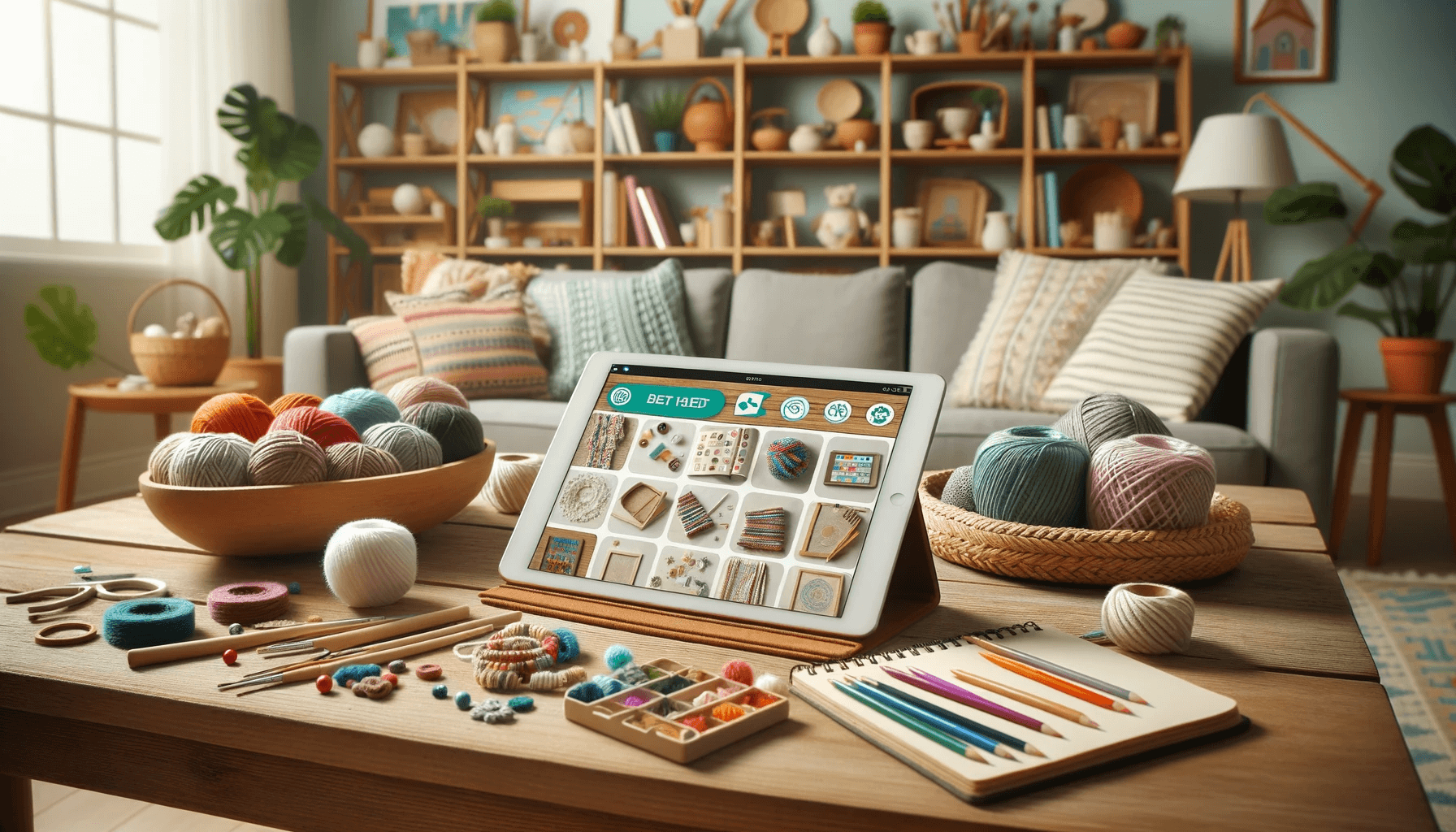Augmented Reality (AR) has revolutionized the way we shop, bringing a touch of magic to the retail world. By seamlessly combining virtual elements with the real environment, AR enhances the shopping experience in ways never seen before. In this article, we will explore the concept of Augmented Reality, its rise in shopping apps, the benefits it brings, successful examples of AR shopping apps, and how it enhances the overall shopping experience.
Augmented Reality refers to the technology that overlays digital information, such as images, videos, or 3D models, onto the real world. It allows users to interact with virtual objects and experience them as if they were physically present. AR works by utilizing sensors and cameras on smartphones or other devices to detect the real-world environment and superimpose virtual elements onto it.
The rise of Augmented Reality in shopping apps has transformed the way we browse and make purchase decisions. It allows customers to visualize products in their own space, try on virtual outfits, and interact with products before making a purchase. This immersive shopping experience has captured the attention of retailers and consumers alike.
Some of the benefits of incorporating Augmented Reality into shopping apps include increased engagement, improved customer satisfaction, reduced returns, and enhanced brand loyalty. Successful examples of AR shopping apps include IKEA Place, which allows users to virtually place furniture in their homes, and Sephora’s Virtual Artist, which enables users to try on virtual makeup.
Augmented Reality enhances the shopping experience by offering features such as virtual try-on, room visualization, and interactive product demos. Virtual try-on allows customers to see how clothing and accessories look on them without physically trying them on. Room visualization enables users to see how furniture or decor items would look in their own space, helping them make better purchase decisions. Interactive product demos bring products to life by showcasing their features and functionalities in an engaging and interactive way.
Despite the numerous advantages, Augmented Reality in shopping apps does have some challenges and limitations. Technical limitations, such as the need for compatible devices and reliable internet connections, can hinder the widespread adoption of AR. user adoption and acceptance play a crucial role in the success of AR shopping apps.
Looking ahead, the future of Augmented Reality in shopping is bright. Advancements in technologies and innovations, such as wearable AR devices and improved AR capabilities on smartphones, will further enhance the shopping experience. Integration with Artificial Intelligence (AI) will enable personalized recommendations and targeted advertising. Augmented Reality is expected to have a significant impact on the retail industry and consumer behavior, with more immersive and interactive shopping experiences becoming the new norm.Key takeaways:
Key takeaways:
- Augmented Reality enhances the shopping experience: By allowing customers to see products in their own space, try them on virtually, and interact with product demos, AR brings products to life and makes the shopping process more engaging and immersive.
- Successful examples of AR shopping apps: Companies like IKEA, Sephora, and Warby Parker have implemented AR in their apps, enabling customers to visualize furniture in their homes, try on virtual makeup, and virtually try on glasses, respectively.
- Challenges and future potential: Technical limitations and user adoption are challenges for AR in shopping apps, but with advancements in technology and integration with AI, the future of AR in shopping holds promise for transforming the retail industry and impacting consumer behavior.
What is Augmented Reality?
Augmented reality (AR) is a technology that overlays digital content onto the real world, enhancing our perception and interaction with it. AR works by using cameras, sensors, and algorithms to track the user’s environment and position virtual objects accordingly. In shopping apps, AR allows users to see how products would look in their own space, try on virtual clothing, or interact with 3D product demos. AR has the potential to revolutionize the shopping experience by providing a more immersive and informative way to browse and purchase items. Pro-Tip: To experience AR, ensure you have a compatible device and download AR-enabled apps for an enhanced shopping experience. “What is Augmented Reality?”
How Does Augmented Reality Work?
- How Does Augmented Reality Work? Augmented Reality (AR) is a technology that combines virtual elements with the real world, enhancing the user’s perception and interaction with their environment. Here are the steps to understand how AR works:
- Scene Recognition: AR uses cameras or sensors to recognize the user’s surroundings.
- Image Processing: The device analyzes the scene, identifying objects and their positions.
- Tracking: AR tracks the user’s movement and adjusts the virtual elements accordingly.
- Rendering: Virtual elements are superimposed onto the real world, aligning with the recognized objects.
- Display: The device presents the augmented scene to the user through its screen or wearable display.
- Interaction: Users can interact with virtual elements through gestures, touch, or voice commands.
By following these steps, AR seamlessly integrates digital content into the real world, creating immersive and interactive experiences for users.
The Rise of Augmented Reality in Shopping Apps
Step into a world where shopping becomes an immersive experience. We’re witnessing the rise of augmented reality in shopping apps, where virtual elements blend seamlessly with the physical world. In this section, we’ll explore the benefits of augmented reality in shopping and delve into successful examples of augmented reality shopping apps. Get ready to discover how augmented reality enhances the shopping experience and allows us to try on products virtually, visualize them in our own space, and even bring them to life through interactive demos. It’s time to revolutionize the way we shop.
Benefits of Augmented Reality in Shopping
Benefits of Augmented Reality in Shopping
Augmented Reality (AR) in shopping apps offers a multitude of benefits, greatly enhancing the overall shopping experience for consumers. By incorporating AR, shopping apps allow customers to visualize products in their own space, eliminating the need for imagination or guesswork. This feature enables users to see how apparel or accessories will fit and look on them through virtual try-on functionalities. AR also facilitates interactive product demonstrations, bringing the products to life and creating a more engaging experience for shoppers.
One significant advantage of integrating AR in shopping apps is the reduction in returns. By allowing customers to virtually visualize and try the products, AR helps minimize returns caused by inaccurate expectations. The immersive nature of AR enhances user engagement, increasing the probability of making a purchase. In fact, a study revealed that 71% of shoppers express their willingness to shop more frequently if they could utilize augmented reality.
Integrating Augmented Reality into shopping apps proves to be exceedingly beneficial by providing the convenience of visualizing products, enabling virtual try-on experiences, offering interactive demos, reducing returns, and enhancing customer engagement.
Examples of Successful Augmented Reality Shopping Apps
Successful augmented reality shopping apps, such as IKEA Place, Sephora Virtual Artist, Warby Parker, and ASOS, have revolutionized the way consumers shop and experience products. These examples of successful augmented reality shopping apps provide immersive and interactive experiences that blend the digital and physical worlds. For instance, IKEA Place allows users to virtually place furniture in their space to see how it looks before making a purchase. Similarly, Sephora Virtual Artist enables users to try on different makeup products virtually, helping them find the right shade and look. In addition, Warby Parker offers a virtual try-on feature for eyeglasses, allowing users to see how different frames look on their face. ASOS provides a virtual try-on feature for clothing, helping users visualize how different outfits will fit and look on them. These apps not only enhance the shopping experience but also increase consumer confidence in their purchases. It is interesting to note that augmented reality shopping apps have been shown to increase conversion rates by up to 250% and reduce returns by 35%.
How Augmented Reality Enhances the Shopping Experience
Augmented Reality (AR) significantly enhances the shopping experience by seamlessly incorporating interactive and immersive features that effectively bridge the gap between online and in-store shopping. There are various ways in which AR enhances shopping, including:
- Virtual Try-On: Through the utilization of AR, customers can virtually try on products like clothes or makeup, which greatly assists in making confident purchasing decisions.
- Room Visualization: AR allows customers to visualize how products will appear in their own space, such as furniture or home decor items. This capability enables more informed choices.
- Interactive Product Demos: By harnessing the power of AR, interactive product demonstrations become a reality. Customers can virtually explore and interact with products, creating higher engagement and satisfaction levels prior to making a purchase.
By integrating AR technology, shopping apps elevate the shopping experience by offering a more engaging and personalized journey for customers. This, in turn, enables them to make better-informed decisions, leading to boosted customer satisfaction and increased sales.
Virtual Try-On: Trying Before Buying
Virtual Try-On is a revolutionary feature in shopping apps that allows customers to digitally try on products before making a purchase. This feature offers several benefits, including:
- Virtual Try-On: The Magic of Augmented Reality in Shopping Apps technology uses augmented reality to show customers how a product will look on them in real time, providing an accurate representation of fit and style.
- Confidence in decision-making: Virtual Try-On eliminates the need for guesswork, allowing customers to see how a product will look on them before buying. This helps boost their confidence in making the right choice.
- Time and cost savings: By virtually trying on products, customers can avoid the hassle of physically visiting stores or ordering multiple sizes to find the right fit. This saves both time and money.
Incorporating Virtual Try-On in shopping apps has become increasingly popular, with examples such as the Sephora Virtual Artist and Warby Parker’s Virtual Try-On. As this technology continues to advance, it has the potential to transform the way we shop online, providing a more personalized and convenient experience for consumers.
Consider utilizing Virtual Try-On features in shopping apps to enhance customer satisfaction and drive sales. By giving customers the ability to virtually try on products, you can offer them a more interactive and engaging shopping experience, ultimately boosting customer confidence and loyalty.
Room Visualization: See Products in Your Space
To see products in your space through room visualization, follow these steps:
- Download a shopping app that offers augmented reality features.
- Open the app and select the desired product category.
- Browse through the available products and choose one that you are interested in.
- Select the option for room visualization or a similar feature.
- Grant the app access to your device’s camera and scan the room you want to visualize the product in.
- Follow the prompts to position and scale the virtual product within your space.
- Move around and view the product from different angles to see how it fits in your room.
- Experiment with different products and placements to find the perfect match for your space.
- If satisfied, proceed to purchase the product directly from the app.
Interactive Product Demos: Bringing Products to Life
To bring products to life and enhance the shopping experience, interactive product demos in augmented reality (AR) shopping apps offer a unique and immersive experience for consumers. These interactive product demos allow users to explore products from different angles, zoom in to see details, and interact with features, providing a realistic experience. By trying out products virtually, consumers can make more informed choices before making a purchase, enabling them to engage in informed decision-making. The interactive nature of these demos also keeps users engaged and entertained, resulting in increased engagement and an enhanced overall shopping experience. With AR technology revolutionizing the way consumers interact with products, it truly brings products to life, creating a dynamic and engaging shopping experience.
Challenges and Limitations of Augmented Reality in Shopping Apps
Augmented reality has revolutionized the shopping experience, but it’s not without its challenges. In this section, we’ll dive into the obstacles and limitations that shopping apps face when implementing augmented reality. From technical hurdles to user adoption, we’ll uncover the realities behind the magic. So get ready to explore the ups and downs of augmented reality in shopping apps, and discover how these challenges shape the future of virtual shopping.
Technical Limitations of Augmented Reality
Technical limitations of augmented reality (AR) play a crucial role in the development and adoption of shopping apps. These limitations encompass the hardware constraints, including the processing power and display capabilities of smartphones, which can impact the quality and performance of AR experiences. Challenges may arise in achieving accuracy in object recognition and tracking, leading to alignment issues and potential glitches. Additionally, limited battery life and network connectivity can impede a seamless AR experience. Nevertheless, continuous technological advancements, such as the integration of artificial intelligence, are actively addressing these challenges and paving the path for more robust and immersive AR shopping experiences.
User Adoption and Acceptance
User adoption and acceptance play a crucial role in the success of augmented reality (AR) in shopping apps. To increase user adoption and acceptance, several factors should be considered:
- Simplicity: Ensuring that the AR experience is intuitive and easy to navigate, allowing users to quickly understand and interact with virtual products.
- Ease of Use: Integrating AR features seamlessly into the overall user experience of shopping apps, making it convenient for users to try on products or visualize them in their space.
- Educational Resources: Providing clear instructions and tutorials to help users effectively use AR features, boosting their confidence and encouraging adoption.
- Realistic and Reliable: AR experiences must be accurate, realistic, and reliable, offering users a true representation of products. This builds trust and encourages acceptance.
- Feedback Mechanisms: Incorporating user feedback and continuously improving the AR experience based on user insights to enhance user adoption and acceptance over time.
Ensuring a seamless, user-friendly, and reliable AR experience is essential to driving user adoption and acceptance in shopping apps.
One example of AR’s successful user adoption and acceptance is the Pokemon Go app. Released in 2016, it quickly gained popularity as users embraced the AR technology to catch virtual creatures in the real world. The app’s success demonstrates how engaging and user-friendly AR experiences can captivate audiences and drive adoption.
The Future of Augmented Reality in Shopping
Get ready to step into the future of shopping! In this section, we’ll take a closer look at the exciting developments in augmented reality (AR) that are revolutionizing the way we shop. Brace yourself for mind-blowing insights into new technologies and innovations that are shaping the retail industry. Discover how the integration of AR and artificial intelligence is taking the shopping experience to a whole new level. Plus, we’ll explore the profound impacts that AR is having on consumer behavior and the retail landscape. Hold on tight, because the future of shopping is about to be unveiled!
New Technologies and Innovations
New technologies and innovations are driving the future of augmented reality in shopping apps. These cutting-edge advancements are transforming the way customers interact with products and make purchasing decisions. Notable developments include holographic displays, which create lifelike 3D images for an enhanced shopping experience. Furthermore, the integration of artificial intelligence enables apps to provide personalized recommendations, virtual stylists, and real-time product information. Gesture and voice recognition also play a significant role, allowing customers to navigate shopping apps using intuitive hand gestures or voice commands, thereby making the experience more convenient and hands-free. Moreover, the integration of extended reality (XR) technologies, such as mixed reality and virtual reality, with augmented reality further enhances the immersive and interactive shopping experiences. The potential of these new technologies and innovations to revolutionize shopping is immense. They offer unparalleled convenience, personalization, and engagement, setting a new standard for the way we shop.
Integration with Artificial Intelligence
Integration with artificial intelligence is a crucial factor in the future of augmented reality in shopping apps. By blending AR technology with AI, retailers can effortlessly provide personalized recommendations and deliver a seamless shopping experience. Utilizing AI-powered algorithms, user preferences and buying behavior can be analyzed to offer relevant product suggestions, thereby making shopping more efficient and enjoyable. The integration of artificial intelligence further enhances the accuracy and realism of virtual try-on and product visualization features. This integration has the potential to revolutionize the retail industry and provide consumers with a truly immersive and personalized shopping experience. To improve further, it is suggested to refine AI algorithms in order to better comprehend individual preferences and continuously update the technology to proactively address evolving customer demands.
Impacts on Retail Industry and Consumer Behavior
The retail industry and consumer behavior have been significantly impacted by the rise of augmented reality in shopping apps.
- One of the key impacts is an enhanced shopping experience. By using AR, consumers can visualize products in their own space, which increases engagement and confidence when making purchasing decisions.
- Another impact is the increase in sales. AR allows for interactive product demos and virtual try-on features, which helps customers make more informed choices. Consequently, this leads to higher conversion rates.
- AR technology also plays a role in improving customer satisfaction. It provides shoppers with a sense of novelty and excitement, creating a positive shopping experience that fosters brand loyalty.
- Furthermore, there is a noticeable shift in consumer behavior due to the convenience of AR. More and more consumers are relying on online shopping and virtual experiences. This has caused traditional retailers to adapt and incorporate AR into their strategies.
According to a study conducted by Retail Perceptions, 61% of shoppers prefer to shop at stores that offer augmented reality experiences.
Frequently Asked Questions
1. How is augmented reality (AR) being used in the shopping experience?
AR combines real-time video with virtual overlays, allowing customers to try on products virtually. They can customize and virtually try on items like Nike Air Force 1s, changing colors and textures using AR filters.
2. Which social media platforms are incorporating AR shopping experiences?
Social media platforms such as Snapchat, TikTok, YouTube, and Instagram have expanded their in-app shopping offerings to include AR-powered makeup try-ons, livestream shopping features, and virtual AR escape room games like IKEA’s “declutter” game.
3. How are fashion and beauty brands using AR to provide personalized shopping experiences?
Fashion and beauty brands, such as Sephora and L’Oreal, are using AR technology to provide personalized shopping experiences. Sephora offers a virtual try-on experience where customers can try different combinations of products. L’Oreal has collaborated with Facebook to create AR advertisements for its products.
4. Are younger demographics driving the growth of social commerce?
Yes, Gen Z and Millennial social media users are expected to drive the growth of social commerce. By 2025, they are projected to account for 62% of global social commerce spending.
5. How does AR benefit retailers in terms of digital marketing?
AR experiences in shopping apps help engage younger audiences, driving social commerce growth. A recent survey revealed that 71% of consumers would shop more often if retailers offered AR experiences, making it a savvy business move for brands targeting tech-savvy consumers.
6. How is the social commerce market predicted to grow in the future?
According to a report from Accenture, the social commerce industry is expected to grow three times faster than traditional e-commerce over the next three years. Global social commerce sales are projected to reach $1.2 trillion in 2025, with the United States alone reaching $99 billion.
